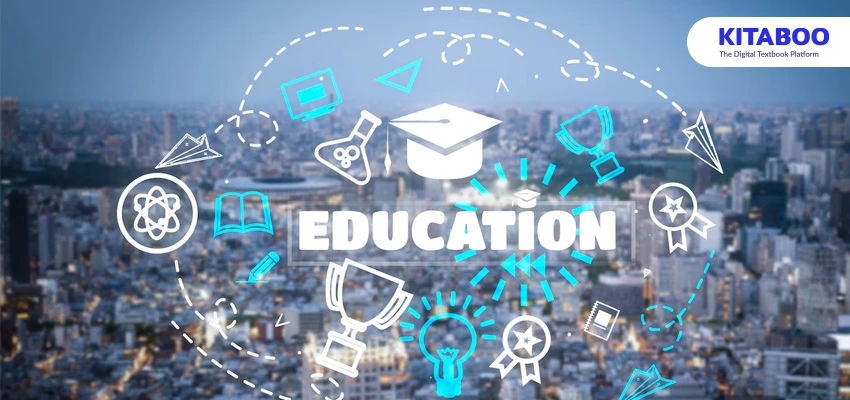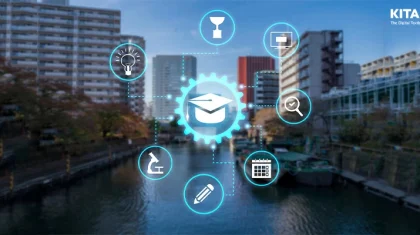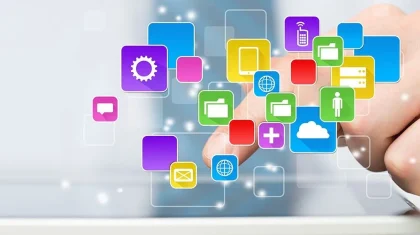
Understanding Content Delivery in EdTech Publishers vs LMS
Summarize this blog with your favorite AI:
Today, learners demand flexibility and accessibility from their learning materials.
Digital platforms and eBook publishing have kept up with the demand, making online learning a popular alternative to traditional classroom settings.
However, there are several differences in how EdTech publishers deliver content vs. LMS (Learning Management Systems). Both methods provide their unique benefits and features to institutions, making them suitable for different use cases and requirements.
This blog provides a breakdown of EdTech publishers vs. LMS to ensure you deliver content using each mode.
Table of Contents:
- What is EdTech Publishing?
- What is a Learning Management System?
- Differences in Content Delivery: LMS vs EdTech Publishers
- How to Choose the Right Platform
- Seamless Content Distribution with KITABOO
What is EdTech Publishing?
EdTech publishing is the practice of creating, publishing, and distributing digital educational content (like ebooks and online courses) using digital technology platforms. Sometimes EdTech publishing may combine traditional publishing methods with technological capabilities to deliver learning content more efficiently and in an interactive way.
EdTech publishing allows learners to access learning content from any device and location, making it more accessible and flexible. Additionally, EdTech platforms may provide some other subscription-based features as well (like live webinars with authors or educators) to enhance course value.
For example, Coursera is an EdTech publishing company that provides ready online courses and learning materials from top universities and institutions over a digital platform.
What is a Learning Management System?
A Learning Management System (LMS) is a software or platform that helps authors create, manage, and deliver educational or training content and programs. You can use LMSs to create and deliver content, track learner progress, centralize your publishing and usage data, use smart, AI-powered features (like personalized learning journeys), and use it to deliver content over portable devices.
For example, KITABOO and Moodle offer powerful LMS features that allow you to create, distribute, and manage the security of the digital content you create.
LMS is a delivery system for educational content, whereas EdTech publishing is more of a content creation process.
Differences in Content Delivery: EdTech Publishers vs. LMS
There are eight major differences in the way EdTech publishers vs. LMS deliver educational content:
Overview
| Feature | LMS | EdTech Publishers |
| Content ownership and control | Institutions own and control the content. | Publishers own the content and sell it to institutions. |
| Customization | Content is fully customizable. | Limited options for customization. |
| Delivery method | Centralized platform. | Various channels, such as online platforms or even textbooks. |
| System integrations | Seamless. | Requires additional setup and configuration. |
| Assessment and feedback | Create, manage, and track assessments. | Limited assessment tools. |
| Analytics and reporting | Comprehensive features. | Basic features. |
| UX and accessibility | Friendly UI and high accessibility. | Variable UI, high focus on content quality. |
| Cost/licensing | Subscription/licensing fee. | Subscriptions/content purchases. |
1. Content Ownership and Control
- LMS: Institutions can purchase or subscribe to LMS platforms and gain full ownership of the tool and the content they create on it.
- EdTech Publishers: Institutions do not own any educational content unless they purchase it from the publishers.
2. Content Customization
- LMS: Institutions can customize the LMS content to suit their distribution, curriculum, and course needs. For example, they can localize the content and append resources.
- EdTech Publishers: Institutions get access to pre-packaged content with limited customizability. Some publishers may support white labeling.
3. Content Delivery Method
- LMS: A centralized platform provides students access to all the courses, assignments, assessments, and resources they require using a single login ID and password.
- EdTech Publishers: Online publishers offer you a choice of distributing content across various online channels, like eLearning platforms, online libraries, digital downloads, etc.
4. Integration with Other Systems
- LMS: LMSs are designed to integrate seamlessly with your existing systems like CRM, library databases, SIS (Student Information Systems), etc.
- EdTech Publishers: EdTech publishing platforms may offer integration capabilities but you would require professional help with APIs and configurations.
5. Assessment and Feedback
- LMS: These platforms allow you to flexibly create and manage assessments, track student progress, generate immediate feedback, and automate student reports.
- EdTech Publishers: Content creation and distribution are the main focus of EdTech publishers, which may require you to integrate additional platforms for assessment management.
6. Analytics and Reporting
- LMS: LMSs often provide a full suite of analysis and reporting features that allow you to track metrics like learner engagement, learning outcomes, student performance, duration spent on coursework, etc.
- EdTech Publishers: You get basic analytical features like engagement rates with EdTech Publishers and may need additional reporting tools for a full view.
7. User Experience and Accessibility
- LMS: LMSs are designed with user experience in mind, offering fluid interfaces with easy access to key features.
- EdTech Publishers: Publishers focus more on providing high-quality content, which may leave room for improvement in user experience.
8. Cost and Licensing
- LMS: These platforms can be accessed through a subscription method or purchase licenses over the cloud.
- EdTech Publishers: You can access pre-published content by purchasing it or subscribing to the publisher’s platform for paid/free downloads.
How to Choose the Right Platform
To make the right selection between EdTech publishers vs. LMS, consider the following aspects carefully:
- LMS supports various pedagogical approaches, such as blended learning, flipped classrooms, and project-based learning. On the other hand, EdTech platforms are designed for a more orderly and content-focused learning delivery. Your selection should consider how you want to teach your students.
- LMS makes real-time feedback possible, tremendously enhancing student engagement and motivation. On the other hand, EdTech publishers have a more static assessment process. Based on your curriculum needs, decide between dynamic and static feedback mechanisms.
- LMSs allow for effective management of content in the long term. On the other hand, EdTech publishers make the most updated content available to you at any given time. Select a mode based on how well you are equipped to manage the content.
Seamless Content Distribution with KITABOO
Every institution has unique content delivery and distribution needs. For example, a school may require blended learning capabilities, whereas an online learning institute may require high-quality content. EdTech publishing and LMS thus perform well in their own circles.
If you require a platform that combines the best of both worlds, consider partnering with KITABOO digital publishing platform. It allows you to manage your content from end to end, right from creating it to managing its distribution and IP rights.
Plus, KITABOO provides robust analytics and reporting, AI-powered content creation and editing, and an eLearning platform where your students can come together to learn. To explore more interesting features, get in touch with us today.
Also Check:
Discover how a mobile-first training platform can help your organization.
KITABOO is a cloud-based platform to create, deliver & track mobile-first interactive training content.

![Top 5 Free Publishing Sites for Independent Publishing [2026]](https://kitaboo.com/wp-content/uploads/2025/09/Top-5-Free-Publishing-Sites-for-Independent-Publishing-2026-420x235.webp)
